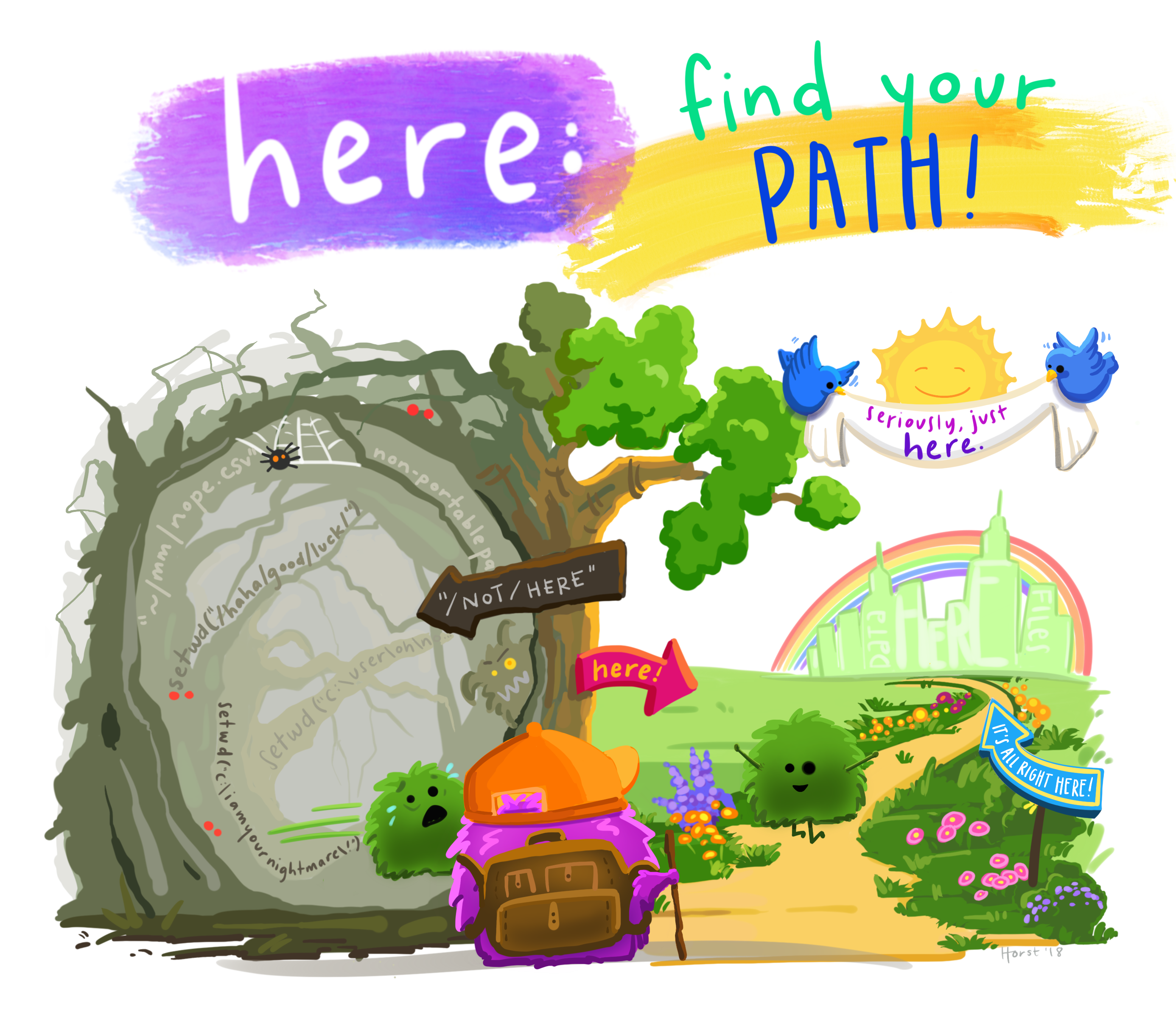[1] "/Users/bcs88/Projects/info-4940/course-site"Maintaining reproducible computing environments
After pulling from the remote repo, you may need to synchronize your environment if a team member has changed it.
Lecture 11
Cornell University
INFO 4940/5940 - Fall 2025
September 30, 2025
uv to maintain project dependenciesWork on more than 1 thing at a time
Collaborate, communicate, distribute
Start and stop
Dedicated directory
Positron workspace
RStudio Project
Git repo, probably syncing to a remote
Everything related to the project
Working directory \(\neq\) home directory

Artwork by @allison_horst.
here::here()Users/
bcs88/
supreme-court/
.git/
data/
scotus.csv
analysis/
exploratory-analysis.qmd
final-report.qmd/Users/bcs88/supreme-court/).qmd and assumption of working directoryread_csv("data/scotus.csv")read_csv(here("data/scotus.csv"))Positron vs. RStudio
.R, .py, .qmd, etc.).gitignoreEvery time you sit down to work:
Source: INFO 1300 with Profs. Soltoff and Harms
Conflicts generally arise when two people have changed the same lines in a file, or if one developer deleted a file while another developer was modifying it.
Source: Atlassian
When you pull your team member’s commits into your local repository, it may result in a conflict!
Git merges automatically (no human intervention required)!
Image credit: INFO 1300
Git merges automatically (no human intervention required)!
Image credit: INFO 1300
Git cannot merge automatically. Developer must resolve conflict!
Image credit: INFO 1300
Look for conflict markers
<<<<<<<, =======, >>>>>>>
Pick the lines you want to keep. Remove markers.
Caution: Carefully study each line. You may need to combine the lines, not just pick one!
Stage, commit, push
<<<<<<< (your work)
<title>Zoo</title>
=======
<title>Ithaca Zoo</title>
>>>>>>> (server)Differences in:
uv for Python projectsAfter pulling from the remote repo, you may need to synchronize your environment if a team member has changed it.
README filesAt the end of the project, we will review each team member’s contributions to the project.
Penalties for failing to contribute
I am serious about every member of the team equitably contributing to the project. Students who fail to contribute equitably may receive up to a 100% deduction on their project grade.
Instructions
Briefly share your project topic ideas. Select one to flesh out now.